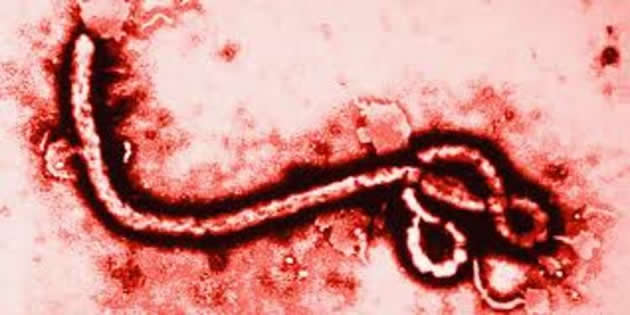How Nigeria, Senegal defeated Ebola

Chinua Akukwe Correspondent
The World Health Organisation (WHO) on 17 and 20 October 2014 declared Senegal and Nigeria, Ebola-free, respectively. Nigeria and Senegal are now Ebola-free, according to the WHO, since after a period of 42 days, twice the maximum medically known incubation period, neither country recorded a new infection.
An Ebola-free Nigeria and Senegal at this time is a remarkable achievement for an infection that is rapidly achieving significant global implications. The United States and Europe are on maximum alert due to few reported cases and nearly one hundred individuals under various stages of close monitoring for any sign of infection.
Other regions around the world are scrambling to remain Ebola free. How did Nigeria and Senegal become Ebola-free?
What are important global lessons learned in concerted efforts to contain the Ebola outbreak?
The robust Ebola response in Nigeria and Senegal is significant since both countries are close to current epicentre of the 2014 West Africa outbreak: Guinea, Liberia and Sierra Leone. Citizens of Senegal moved relatively freely between the three most impacted countries, until recently. Nigeria is Africa’s economic powerhouse and the key economic/political hub of West Africa, with huge population densities, including more than 21 million residents of Lagos, its former capital. Senegal successfully fought off the imported case of Ebola from Guinea to Dakar, its capital. Nigeria also successfully ended the spread of Ebola imported by a Liberian national into Lagos.
Nigeria and Senegal Response
According to the WHO, the US Centres for Disease Control (CDC), relevant health authorities in Nigeria and Senegal, the response to the imported case of Ebola in both countries was not only swift but also comprehensive in accordance with international public health standards. Both countries, upon becoming aware of the index case, immediately activated already existing national disease surveillance, detection and control systems. Every contact of the index case and contacts of contacts with suspected clinical symptoms were not only traced but also monitored closely for 21 days.
Nigeria health officials in Lagos and the oil city of Port Harcourt, vigorously monitored and followed up each reported or suspected contact. Nigeria health officials reportedly made more than 18,000 face-to-face visits to check upon nearly 900 contacts during the period of the outbreak. Senegal also followed and monitored more than 70 contacts until the end of the 21-day observation period.
To limit the potential spread of Ebola, both countries, where applicable, closed schools and sent students home. Hand sanitising liquids and other anti-infectant solutions became more readily available. Both governments encouraged citizens to actively report suspected infections and to take common-sense steps to reduce personal contact and exchange of bodily fluids with potential cases, dead or alive.
Within days of reported outbreak, Nigeria and Senegal implemented a strict seaports and airport health screening protocol for all individuals coming into and exiting the country. Each port of entry began monitoring the temperature of passengers and for individuals with high recordings, not only were disallowed from immediate travel but also referred to immediate clinical follow up.
The two countries worked closely with the WHO and the CDC regarding technical issues, data updates and epidemiological monitoring.
They also welcomed assistance from other countries, global philanthropies, other multilateral institutions and the organised private sector. Nigeria and Senegal also utilised past experiences with disease outbreaks to manage logistics and day-to-day decision making regarding deployment of scarce resources.
In addition, federal and local authorises worked very closely in both countries to ensure adequate clinical support care, contact tracing, isolation and monitoring. Those suspected of active infection were isolated and provided round-the-clock supportive clinical care, the internationally acceptable gold standard. Clinical personnel received additional training on infectious disease control. Relevant personnel had access to protective clothing. Health facilities with Ebola or suspected cases were not only thoroughly sanitised but also rigorously adhered to waste disposal protocols. In addition, Laboratory testing and confirmation of diagnosis followed WHO standards.
Perhaps, one of the most important hallmark of the Ebola response in Nigeria and Senegal was the implementation of nationwide continuous, comprehensive information, education and communication (IEC) campaign to alert citizens on the outbreak, methods of spread and high risk behaviours. Print and electronic media joined various levels of government in both countries to conduct IEC campaigns. Both governments also mobilised professional organisations, local opinion leaders, community organisations and religious institutions to further spread the IEC campaign against Ebola in remote parts of the country.
Lessons Learned
Nigeria and Senegal provide important, powerful global lessons learned in containing imported Ebola outbreak. The two countries overcame the imported Ebola case into densely population cities and despite close proximity to the three most impacted countries. I briefly discuss lessons learned.
1.Leadership is crucial. The governments of Nigeria and Senegal deserve ongoing global commendation for a resolute stand against Ebola. In particular, the close working relationship between Federal and local authorities in both countries are commendable. In addition, sure-footed technical leadership made a difference. My old friend, Dr. Awa Coll-Seck, the Minister of Health, Senegal is one of the most experienced public health professionals in the world. In Nigeria, in addition to the Health Minister who adjudged himself creditably, another old friend, Professor Abdul Nasidi, the head of Nigeria’s CDC, has more than three decades high-level experience managing disease outbreaks.
2.Collaboration is indispensable. Nigeria and Senegal represent a model of domestic and international collaboration to contain a disease outbreak.
By leveraging domestic resources and international assistance, both countries mounted a world class, rapid response strategy against Ebola. In addition, both countries has a central, coordinating command-and-control centre to direct nationwide response activities and to manage technical relationship with external partners.
3.Transparency and accountability are key. Both countries mounted a remarkable open, transparent and accountable response to the imported Ebola outbreak, Everyday, the government released status updates and responded to emerging circumstances, and sometimes, false alarms.
4.Mobilizing the public is critical. Nigeria and Senegal implemented a near-perfect information, education and communication campaign against Ebola. Other countries can learn from the effective public/private/professional/civil society collaborative effort that sensitized citizens of both countries in the fight against Ebola.
5.Functional health systems remain the backbone of robust response to disease outbreaks. Nigeria and Senegal have some of the modestly better health systems in West Africa. Both countries took advantage of existing health systems to anchor an effective response against Ebola. Guinea, Liberia and Sierra Leone do not have such advantage, with markedly different experiences and outcomes. — African Executive










Comments